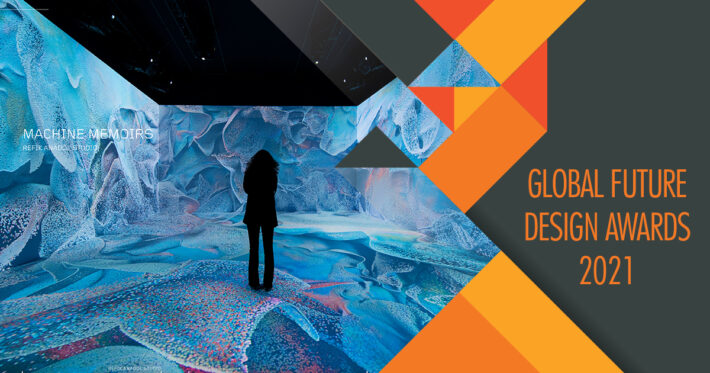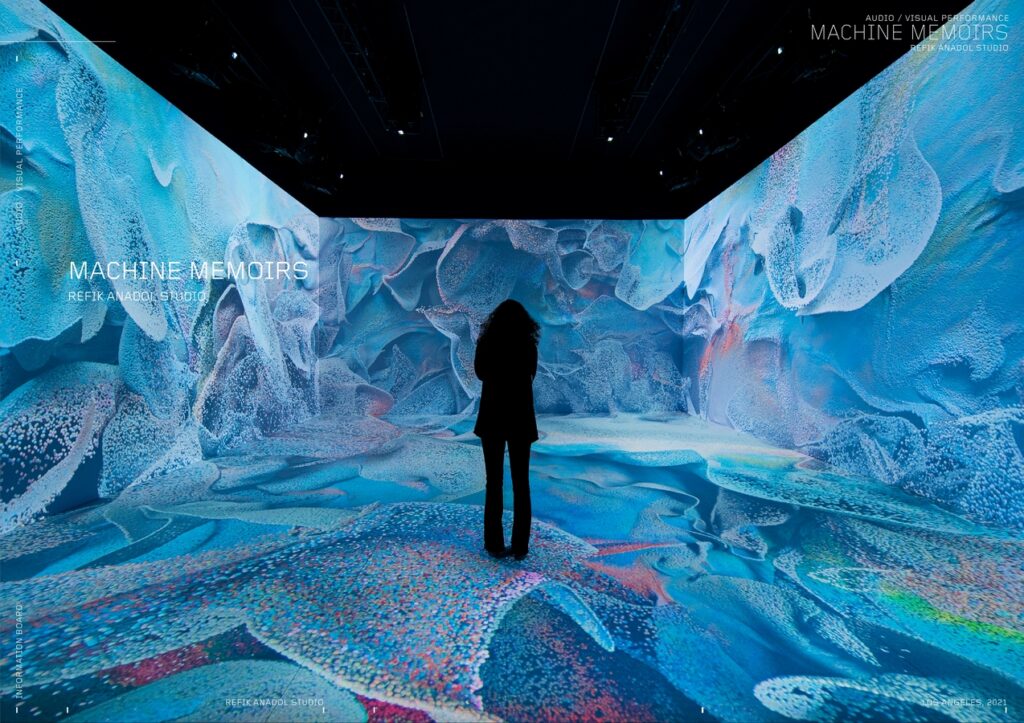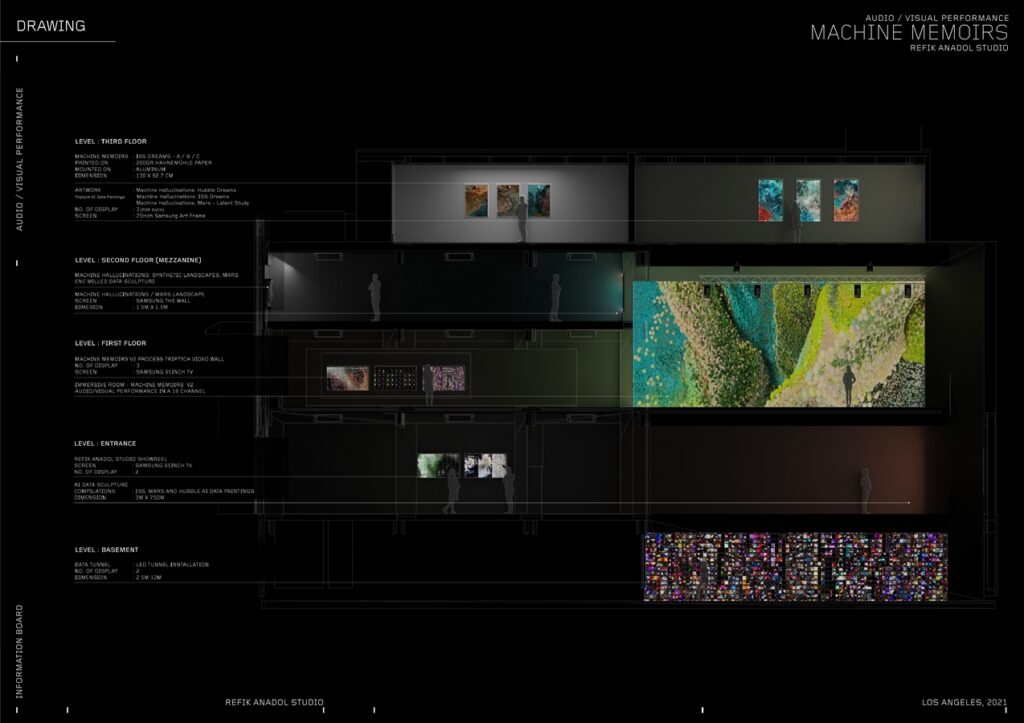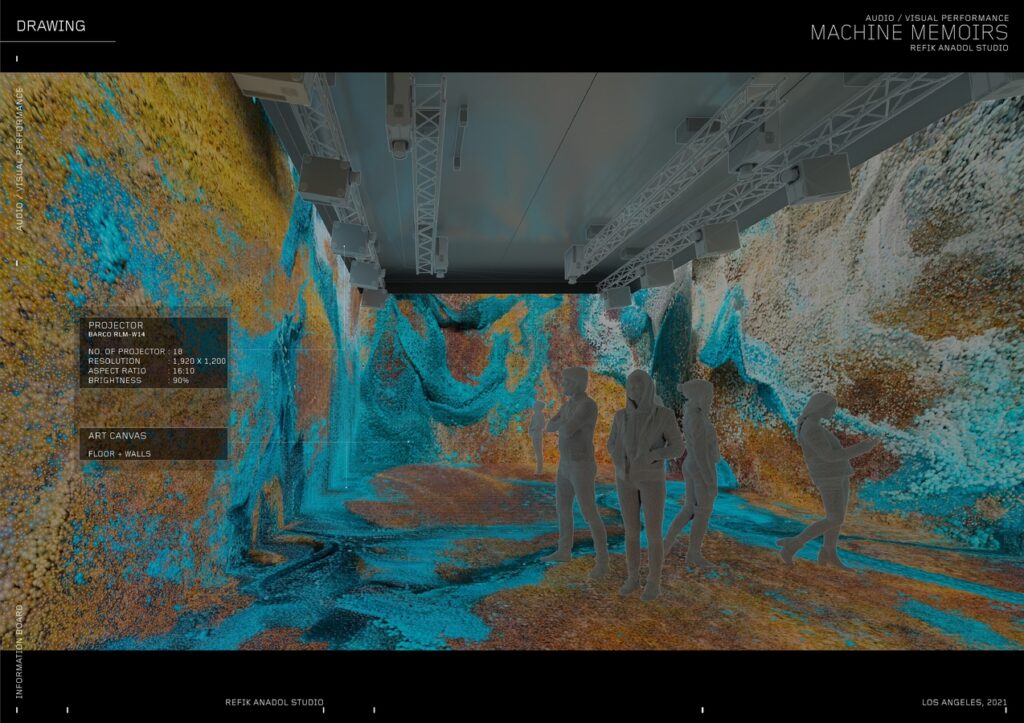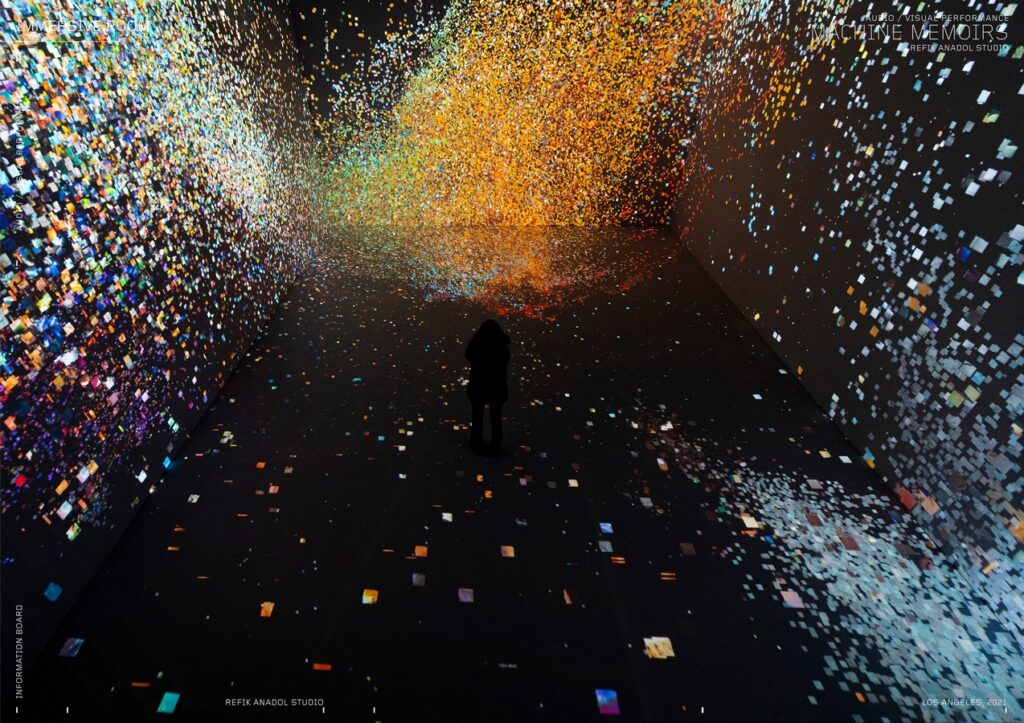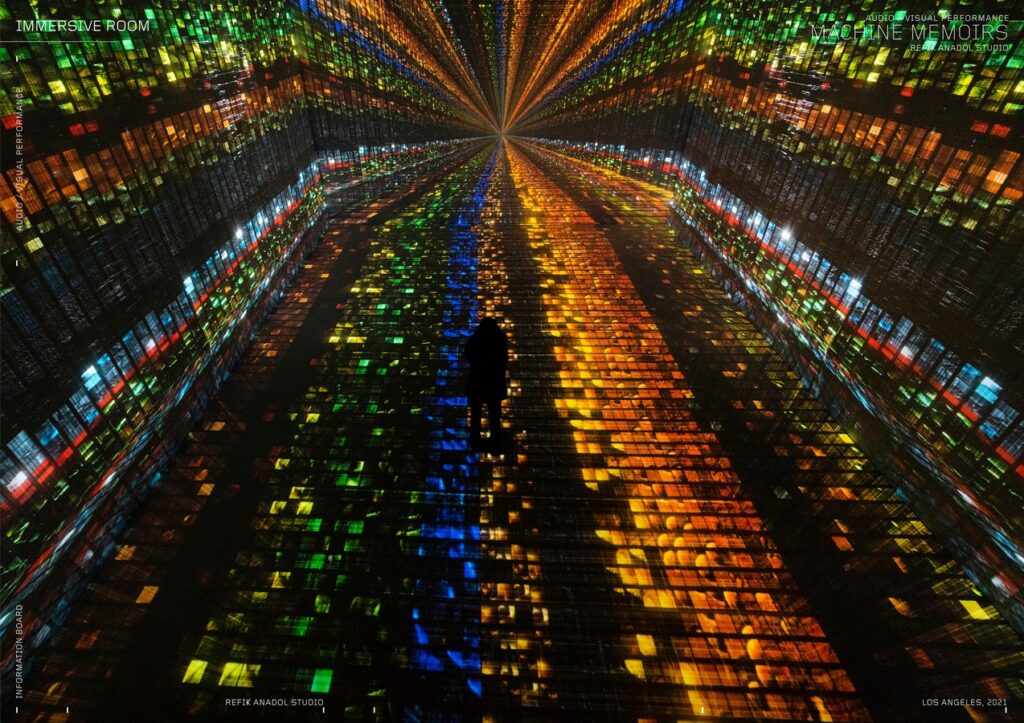As the symbiotic relationship between human life, science and technology continually transforms, the role of machines in pushing the boundaries of imagination generates intriguing discussions about successful human-machine teams. Re;ik Anadol, who sees arti;icial intelligence as collaborator rather than a mere tool, has been exploring interrelated key concepts for challenging our conventional understandings of the cosmos, senses, environments, machines, and the human mind. Machine Memoirs: Space speculates a new conceptual framework to turn the spotlight on the vast photographic archives that document the history of space exploration.
Global Future Design Awards 2022: Discounted Entries Open Now! Save $50
Super Early Discount – 20th October 2021 to 30th December 2021 – $199 = $149
🏆 Second Award
Global Future Design Awards 2021
Machine Memoirs: Space
Architecture Technology Built
Firm
Refik Anadol Studio
Architect/Designer
Refik Anadol
Design Team
Alex Morozov, Brian Chung, Carrie He, Christian Burke, Danny Lee, Efsun Erkilic, Kerim Karaoglu, Pelin Kivrak, Ho Man Leung, Kyle McLean, Nicholas Boss, Nidhi Parsana, Raman K. Mustafa, Toby Heinemann
Location
Istanbul, Turkey
Country
United States
Photographer/Copyright
©Refik Anadol Studio
In Machine Memoirs: Space, machine-based visual speculations about space, and
humanity’s historical attempts to explore its depths unveil intricate connections between
obscurity and openness, creating an alternate architecture of abstract forms where reams of information produce open-ended aesthetic possibilities. The exhibition consists of two interrelated chapters titled Memoirs and Dreams. The ;irst chapter, Memoirs, exhibits a series of data paintings that utilize over 2 million images that were captured and recorded by the ISS, Hubble, and MRO telescopes and other sensors and satellites – the largest dataset ever used to train a generative adversarial network (GAN) for an artwork. When viewed together as the most advanced astronomic “machine memories,” these works also disclose the functionality of the tools that give rise to their aesthetic content in a “Data Tunnel” that displays raw data. The aim is to expand our sense of the universe not only through abstract images, but also through fragmented evidence of a sublime totality that we can only imagine.
The second chapter, Dreams, features 3D data sculptures and a 15-minute immersive AI
cinema installation. The sculptures that were generated by the latest 3D printing
techniques represent synthetic landscapes inspired by the Hubble, ISS, and MRO
telescope’s visual memories.
They exhibit multiple ;low of networks between data points made up of Earth’s and other celestial objects’ topologies. The cinematic part of this chapter, titled Machine Memoirs v.2, explores post-digital architecture in the form of a 15- minute immersive, site-speci;ic AI cinema room that invites the audience to step into the mind of a machine. Experiencing a multi-dimensional, dynamic visualization of how arti;icial intelligence makes connections between vast data clusters, the audience ;inds themselves in an expanding data universe. This space not only represents the interpolation of photographic space archives as synthesis, but also becomes a latent cosmos in which dreams are the main currency of artistic creativity. As a masterfully curated multi-channelbexperience, Dreams offers an avant-garde form of multi-dimensional cartographic aesthetics. The installation’s intricate and abstract layers of machine-generated dreams allude to a connection with a cosmos of unimaginable vastness while its natural pigments trigger a sense of belonging to the earth and to our immediate environments.
Registrations open… Don’t miss the opportunity to win with your visionary projects.


